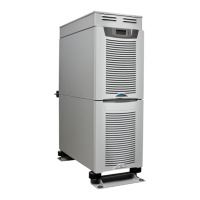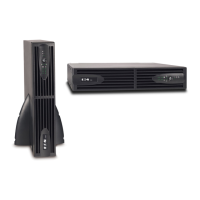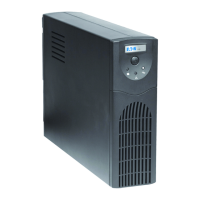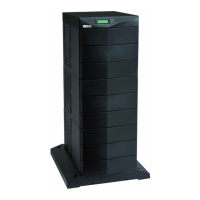120 Eaton Power Xpert 9395 UPS Installation and Operation Manual 164201725—Rev 15
Figure 73. Path of Current Through the UPS in Bypass Mode
Static
Switch
K5
retrevnIreifitceR
K1 K3
Battery
Converter
Battery
Battery
Breaker
Main Power Flow
Trickle Current
Energized
De-Energized
Closed
Open
Breakers Contactors
K2
Bypass Input
Rectifier
Input
Output
Bypass
Breaker
(CB4)
Input
Breaker
(CB1
NOTE On a UPS configured as an IOM, the bypass input, static switch, bypass breaker (CB4), and K5 are not present.
NOTE On a UPS configured with a Continuous Static Switch (CSS), bypass breaker (CB4) is not present.
If the UPS transfers to Bypass mode from Online mode due to any reason other than operator intervention, the
UPS automatically attempts to transfer back to Online mode (up to three times within a ten minute period). The
fourth transfer locks the critical load to the bypass source and requires operator intervention to transfer.
66..22..77 BBaatttteerryy MMooddee
The UPS automatically transfers to Battery mode if a utility power outage occurs, or if the utility power does not
conform to specified parameters. In Battery mode, the battery provides emergency DC power that the inverter
converts to AC power.
Figure 74 shows the path of electrical power through the UPS system when operating in Battery mode.
During a utility power failure, the rectifier no longer has an AC utility source from which to supply the DC output
current required to support the inverter. The input contactor K1 opens and the battery instantaneously supplies
energy to the battery converter. The converter either bucks or boosts the voltage so that the inverter can
support the customer's load without interruption. If bypass is common with the rectifier input, the backfeed
protection contactor K5 also opens. The opening of contactors K1 and K5 prevent system voltages from
bleeding backwards through the static switch and rectifier snubber components and re-entering the input
source.
Understanding UPS Operation

